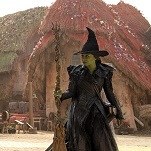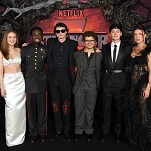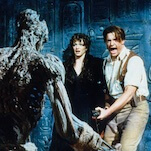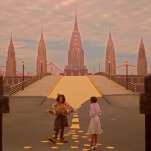With comic books acting as the foundation of more entertainment vehicles than ever before, there’s been an uptick in books presented as historical guides to and analysis of the decades-long history of various characters and publishers. Writers have begun to tackle some of the more convoluted stories comic books provide as source material, to varying degrees of success. Tim Hanley’s Investigating Lois Lane: The Turbulent History Of The Daily Planet’s Ace Reporter treads similar ground to his first book, Wonder Woman Unbound, but this time he concerns himself with a character underserved not only by the recent glut of novels but also her own publisher. [Disclosure: The author of this review and Hanley will both be on a panel speaking about women in comic books, but that appearance is not compensated in any manner.] Lois Lane, a staple in more Superman stories than any other supporting character, has been long absent from the pages of DC Comics, and Hanley does a remarkable job outlining her history and the reasons why she seems to have been largely forgotten of late. The book is organized into chapters by theme, exploring not only Lois in comics but also in TV and movies. By keeping the focus on each medium in turn, it’s much easier to see how the character was influenced not only by the comic book industry but also by Hollywood and various production studios that have owned the rights to portray the character on screens large and small.
The history lesson alone would be fascinating enough to warrant picking up the book, but where Hanley really shines is in his patient exploration of how and why Lois transformed from a tough, independent reporter to a lovelorn damsel and back, sometimes occupying both roles at once. Particularly when discussing the real-life people who had a role in Lois’ various incarnations, Hanley is even-handed and nonjudgmental without giving anyone a pass for the ways they may have failed to give Lois her due. It’s refreshing to see analysis that not only recognizes that comics may be a product of their times, but also must be held accountable for not improving when it comes to issues of bigotry and oppression. Hanley acknowledges the issues with Lois’ nearly all-male creative staff and explores the ways that different female writers, artists, directors, and producers have pushed to ensure that her character remain nuanced and driven, particularly when compared to many other female characters, and not just in comic books.
These stories in which male creators drove female characters into villainy are an interesting, albeit wholly inadvertent, cautionary tale about what can happen when men, real and fictional, are at the center of everything.
Hanley has a far better grasp on his subject matter than many others who have attempted literary analysis of comics, and he strikes a good balance between in-depth explanations of backstory that could bore more knowledgable fans and glossing over timelines and plots that would confuse new ones. Many of the more in-depth explanations of strange and labyrinthine comic book canon are contained in footnotes, allowing for a more pleasurable read than breaking up a thought to explain who Superman’s mermaid ex-girlfriend was and why she was important. They serve almost as Hanley’s “Note from Ed.”—a habit that’s not nearly common in comics today as it once was, but were used to clue readers in on plots they may have missed in other issues. These footnotes are also where Hanley’s dry, almost secretive sense of humor comes out. He obviously delights in some of the ridiculousness of Silver Age comics, noting “The name ‘Mxyztplk’ was later changed to ‘Mxyzptlk,’ which is clearly far easier to remember and pronounce.” It’s these little asides that make the book enjoyable—more like a conversation with a truly enthusiastic fan of Lois Lane instead of a dry retelling of her history.
Hanley’s love for the character and the medium that created her is evident on every page, and by the end of the book it’s hard not to share both his high opinion of Lois and occasional disappointment in some of her creators. Fans of Lois herself and books like Glen Weldon’s Superman: The Unauthorized Biography or Jill Lepore’s The Secret History Of Wonder Woman will enjoy Hanley’s engaging, affectionate telling of Lois’ story, but it’s worth picking up even if you’ve never read a comic book before.








































